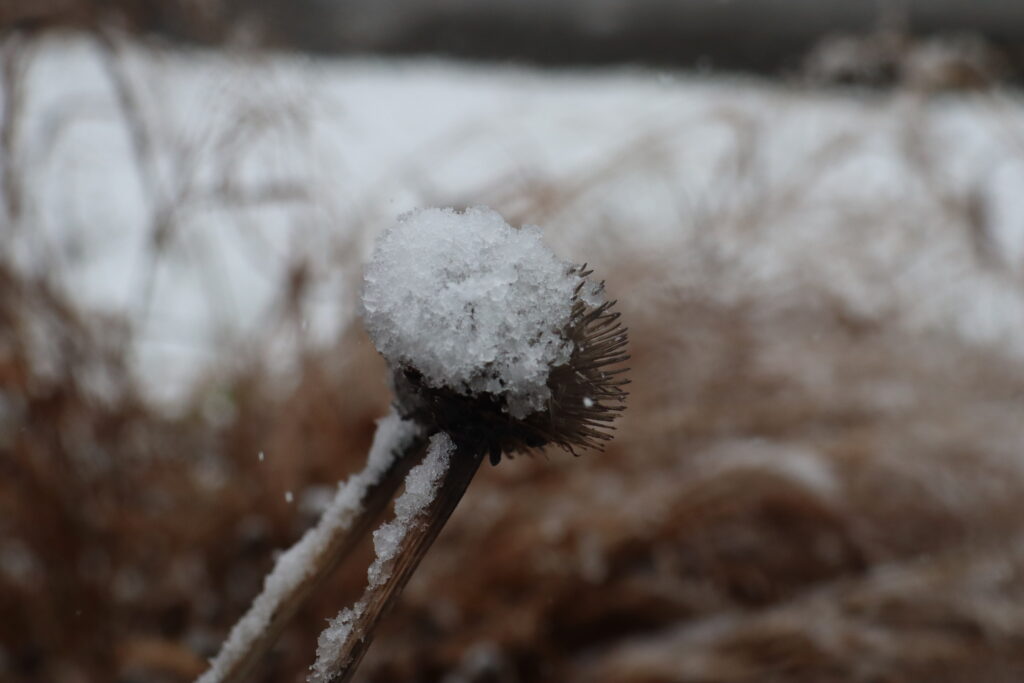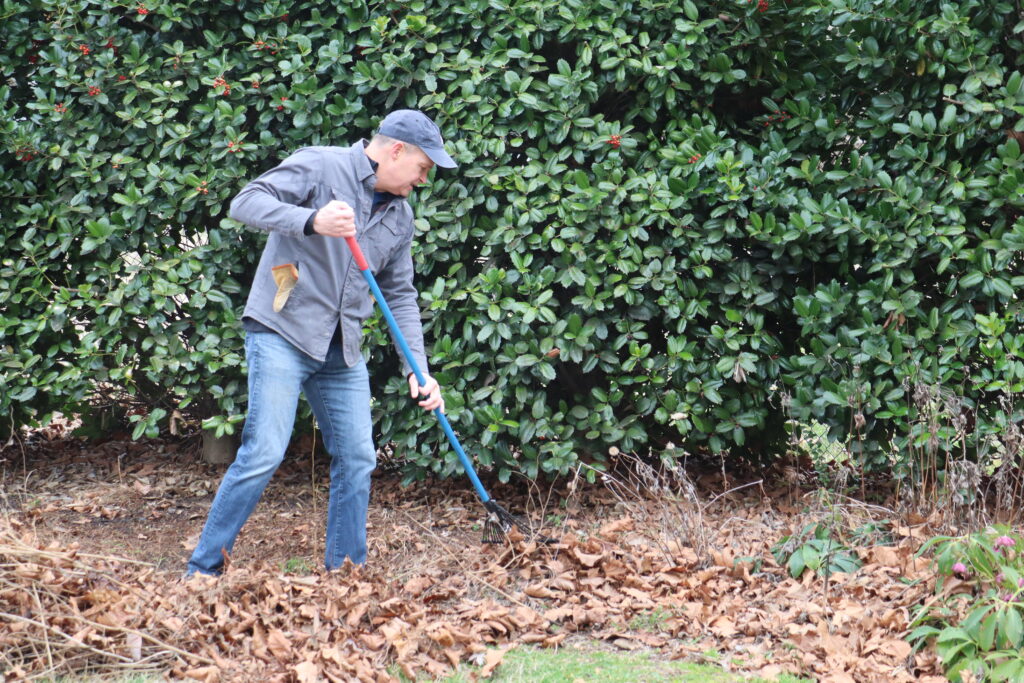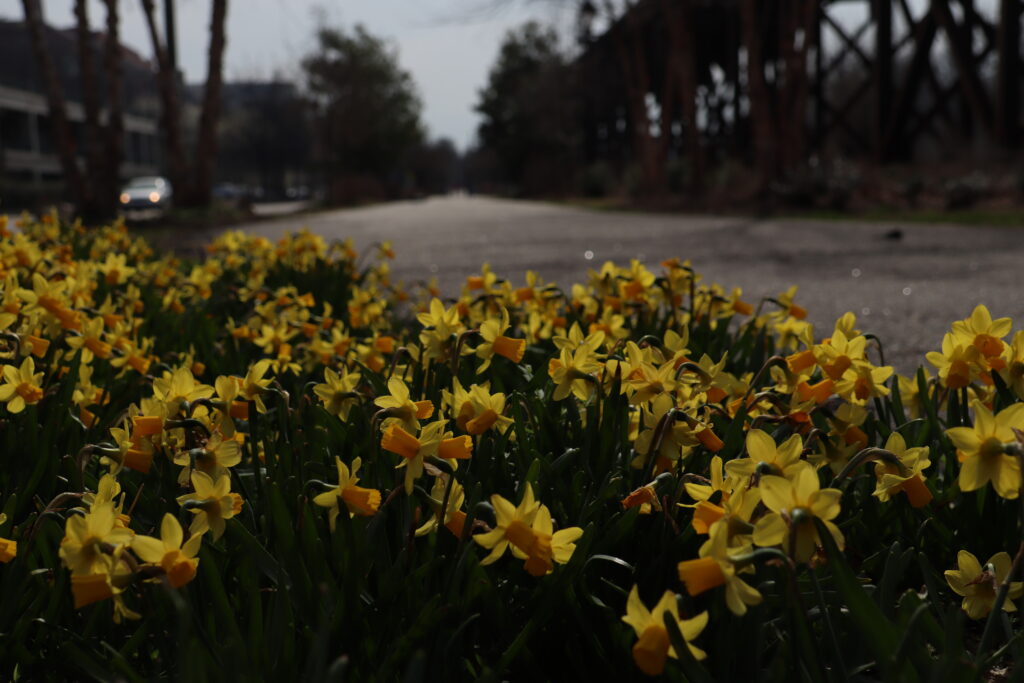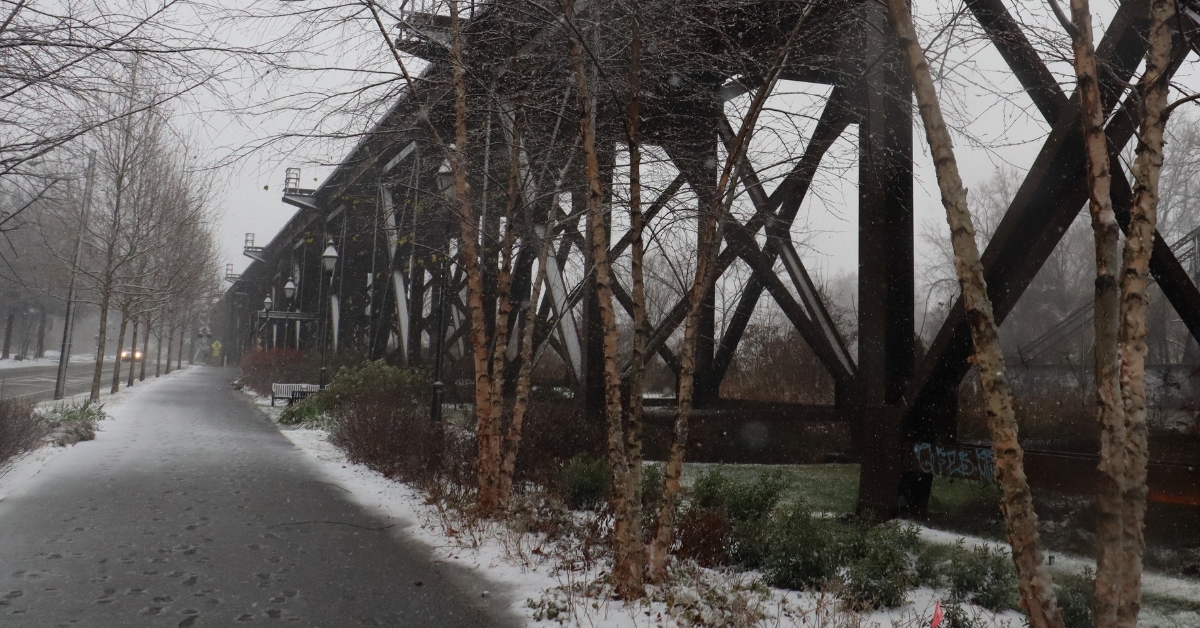Author: Mary Petres
Despite the unbearable heat these last few weeks, there are hints of fall in the air. What does this signify for the gardener and our gardens?
Over the next three months we will begin to put our gardens to bed. How we do this depends on our objective. Traditionally, many of us feel the need to have a “clean slate” moving into winter. We cut all the spent flower stalks to the ground and throw them in the trash or compost. We continuously rake the ground clean of fallen leaves. We may decide to do some dividing and transplanting or install some new plants.
I would like to offer a gentler, more eco-friendly approach to consider. As the days start to wan, the available food sources for our feathered friends also drop off and seed heads in your garden provide a valuable source of nutrition.

An added bonus is the winter aesthetic. What is more beautiful than a seed head wavering above a soft blanket of snow?

Additionally, other smaller creatures, like our garden pollinators, begin to look for winter homes. Some overwinter as larvae, some as adults, but many utilize the stalks of some perennials and spent leaves to create these winter homes. Consider removing only diseased foliage and allow the rest to stay. Mulch up the leaves from your yard and spread gently throughout the garden, while also being careful not to cover the crowns of the perennials too deeply lest they rot. Also, the foliage/branches of many evergreen perennials provide protection to the plant from desiccating winter winds and frigid temperatures. This includes plants like Dianthus, heuchera, tiarella, phlox subulata, hibiscus, perovskia [Russian Sage], lavender, and Buddleia just to name a few!

Fall provides a great window for dividing and transplanting many perennials. A few that come to mind are peonies, astilbe, dicentra, iris, hellebores, rudbeckia, and daylilies. If plantable real estate is limited in your garden, this is a great time to share with family and friends. Personally I do not lift the bulbs of dahlias, canna, calla lilies, or gladiolus. I subscribe more to survival of the fittest theory. However, an extended period of temperatures below twenty degrees Fahrenheit can kill these bulbs. If you want to ensure this doesn’t happen, lift the bulbs and store them in a frost-free location for the winter after the first killing frost of the season.
Spring flowering bulbs offer a great way to introduce early season color and texture to the garden. In Richmond, Virginia most spring flowering bulbs are best planted in November. The ground temperatures need to cool off before they are planted so the bulbs stay in hibernation.

Fall is a great time to step back and assess the composition of your garden. What worked? What did not? Are there areas lacking color or texture during certain periods? Does the garden need a bit more structure? Take pictures throughout the year to document successes and areas that need improvement. Do you want to add plants to encourage more wildlife? Who is already visiting the garden? What provides winter interest and habitat?
The journey continues, albeit a bit slower than in other seasons. The garden will rest, recharge, and re-emerge after winter, rested and prepared for another growing season.
Happy gardening!



I don’t understand the term “lifting bulbs.” Clearly I have much to learn!
Also I will be happy to leave my perennials intact for birds and others. My pond is screened again the autumn leaves.
My phlox had been magnificent all summer but it needs to be divided — will it survive?
Hi there! Lifting bulbs refers to carefully digging them out of the soil, to store them where they won’t be exposed to hard winter freezes (like an unheated garage or shed.) As for your Phlox, it’s best divided in the spring just as new growth starts to emerge. We don’t recommend dividing it in the fall or winter.